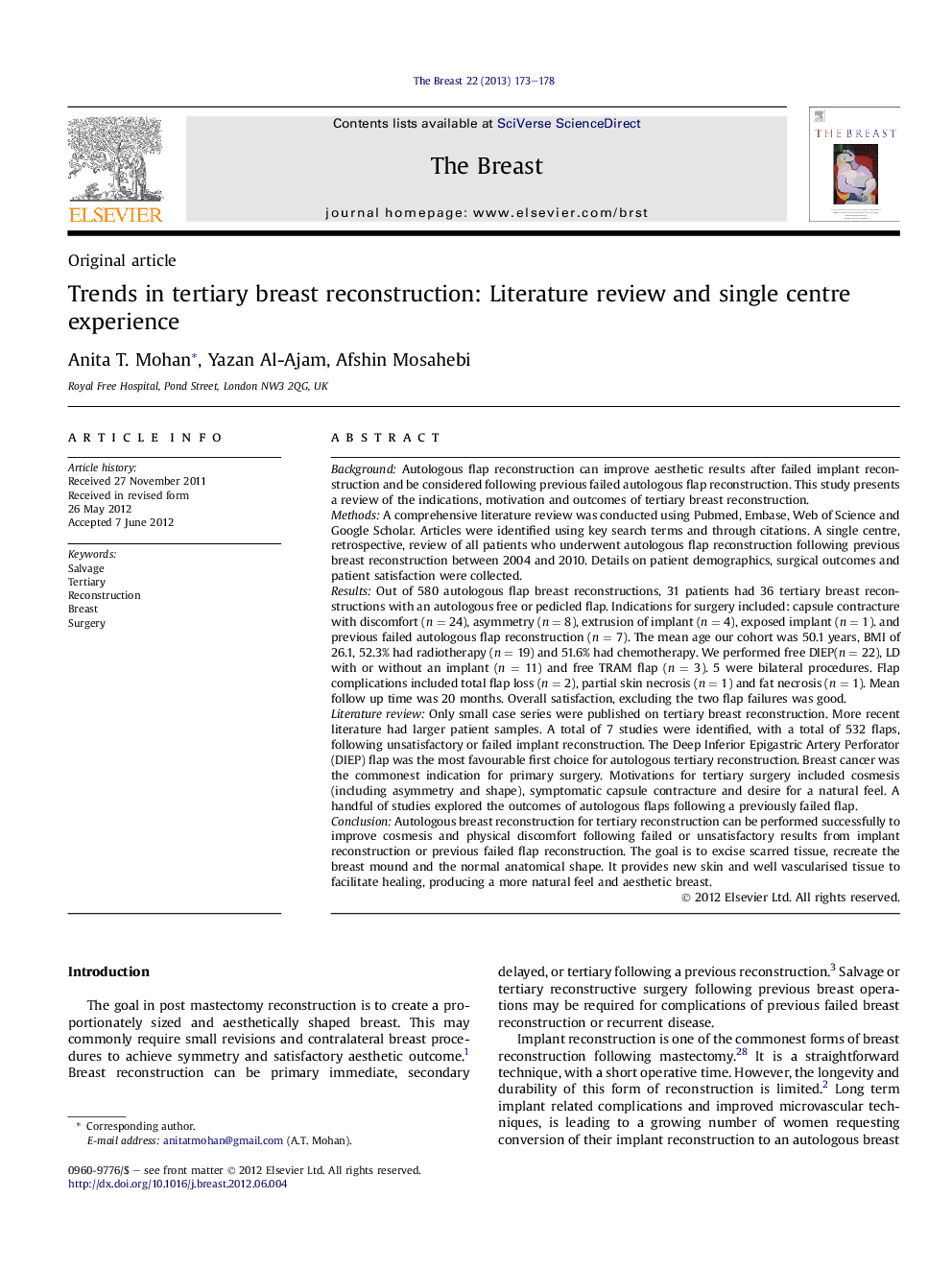| کد مقاله | کد نشریه | سال انتشار | مقاله انگلیسی | نسخه تمام متن |
|---|---|---|---|---|
| 3908796 | 1251194 | 2013 | 6 صفحه PDF | دانلود رایگان |

BackgroundAutologous flap reconstruction can improve aesthetic results after failed implant reconstruction and be considered following previous failed autologous flap reconstruction. This study presents a review of the indications, motivation and outcomes of tertiary breast reconstruction.MethodsA comprehensive literature review was conducted using Pubmed, Embase, Web of Science and Google Scholar. Articles were identified using key search terms and through citations. A single centre, retrospective, review of all patients who underwent autologous flap reconstruction following previous breast reconstruction between 2004 and 2010. Details on patient demographics, surgical outcomes and patient satisfaction were collected.ResultsOut of 580 autologous flap breast reconstructions, 31 patients had 36 tertiary breast reconstructions with an autologous free or pedicled flap. Indications for surgery included: capsule contracture with discomfort (n = 24), asymmetry (n = 8), extrusion of implant (n = 4), exposed implant (n = 1). and previous failed autologous flap reconstruction (n = 7). The mean age our cohort was 50.1 years, BMI of 26.1, 52.3% had radiotherapy (n = 19) and 51.6% had chemotherapy. We performed free DIEP(n = 22), LD with or without an implant (n = 11) and free TRAM flap (n = 3). 5 were bilateral procedures. Flap complications included total flap loss (n = 2), partial skin necrosis (n = 1) and fat necrosis (n = 1). Mean follow up time was 20 months. Overall satisfaction, excluding the two flap failures was good.Literature reviewOnly small case series were published on tertiary breast reconstruction. More recent literature had larger patient samples. A total of 7 studies were identified, with a total of 532 flaps, following unsatisfactory or failed implant reconstruction. The Deep Inferior Epigastric Artery Perforator (DIEP) flap was the most favourable first choice for autologous tertiary reconstruction. Breast cancer was the commonest indication for primary surgery. Motivations for tertiary surgery included cosmesis (including asymmetry and shape), symptomatic capsule contracture and desire for a natural feel. A handful of studies explored the outcomes of autologous flaps following a previously failed flap.ConclusionAutologous breast reconstruction for tertiary reconstruction can be performed successfully to improve cosmesis and physical discomfort following failed or unsatisfactory results from implant reconstruction or previous failed flap reconstruction. The goal is to excise scarred tissue, recreate the breast mound and the normal anatomical shape. It provides new skin and well vascularised tissue to facilitate healing, producing a more natural feel and aesthetic breast.
Journal: The Breast - Volume 22, Issue 2, April 2013, Pages 173–178